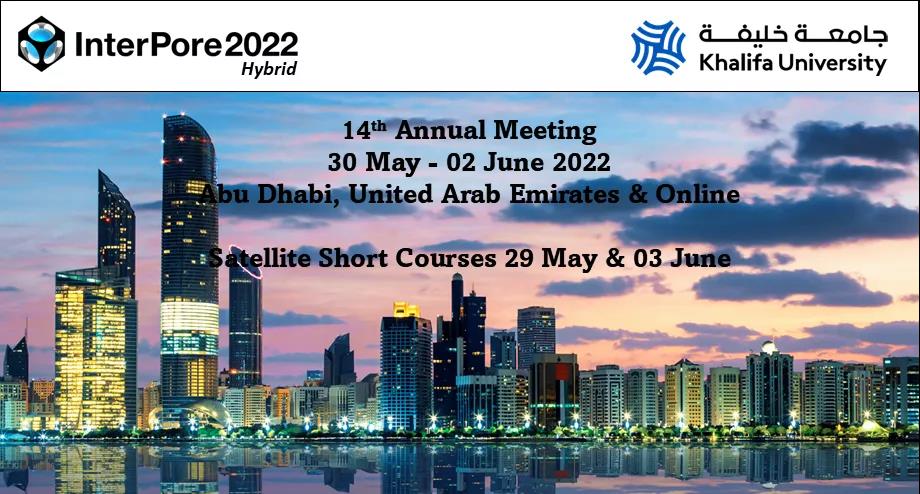Numerical and semi-analytical modelling of the capillary end effect for porous media of any wettability state
Abstract view|373|times PDF download|82|times
Abstract
The capillary end effect appears in a two-phase displacement process as a physical consequence of the capillary discontinuity at the system outlet and causes accumulation of the wetting phase at this location and back along the system. In the study of water injection into a one-dimensional system, to obtain accurate phase saturation profiles in the presence of the capillary end effect at any time during the transient state, conventional implicit pressure explicit saturation and one-dimensional convection-diffusion methods have been modified by applying a novel boundary condition. This modification is entirely physics-based, whereas in commercial simulators fix-up procedures are applied which do not conserve mass. A new term “exit saturation” is introduced which provides a useful way to study and analyse the capillary end effect. Transient-state flow development in the presence of the capillary end effect in different wetting systems is presented in detail in this work. Also, several methods are presented to obtain steady-state saturation profiles. At steady-state conditions, the capillary end effect vanishes in purely water-wet systems and all oil in principle can be displaced from the system in a finite, but very long time. However, in mixed- and oil-wet systems, some oil is permanently trapped in the system at any chosen flowrate, i.e., the capillary end effect cannot be entirely removed no matter how large the flowrate is. However, oil recovery is improved by increasing the flowrate.
Document Type: Original article
Cited as: Goodarzian, S., Sorbie, K. S. Numerical and semi-analytical modelling of the capillary end effect for porous media of any wettability state. Capillarity, 2025, 14(3): 82-99. https://doi.org/10.46690/capi.2025.03.03
Keywords
Full Text:
PDFReferences
Aziz, K., Settari, A. Petroleum Reservoir Simulation. London, UK, Applied Science Publishers, 1979.
Goodarzian, S. Modelling of the capillary end effect in systems of variable wettability. Edinburgh, Heriot-Watt University, 2021.
Goodarzian, S., Sorbie, K. A Rigorous Method for Special Core Analysis SCAL Data Correction in the Presence of Capillary End Effects. Amsterdam, Netherlands, SPE Europec featured at 82nd EAGE Conference and Exhibition, 2020.
Goodarzian, S., Sorbie, K. Correct relative permeability data from steady-state experiments for capillary end effects. Journal of Geoenergy Science and Engineering, 2023, 224: 211626.
Gupta, R., Maloney, D. R. Intercept method-a novel technique to correct steady-state relative permeability data for capillary end-effects. Paper SPE 171797 Presented at the Abu Dhabi International Petroleum Exhibition and Conference, Abu Dhabi, UAE, 10-13 November, 2014.
Hadley, G. F., Handy, L. L. A Theoretical and experimental study of the steady state capillary end effect. Paper SPE 707-G Presented at the Fall Meeting of the Petroleum Branch of AIME, Los Angeles, California, 14-17 October 1956.
Huang, D. D., Honarpour, M. M. Capillary end effects in coreflood calculations. Paper 9634 Presented at the 1996 International Symposium of the Society of Core Analysis, Montpellier, France, 8-10 September, 1996.
Kyte, J. R., Rapoport, L. A. Linear waterflood behaviour and end effects in water-wet porous media. Journal of Petroleum Technology, 1958, 10(10): 47-50.
Leverett, M. C. Capillary behaviour in porous solids. Transactions of the AIME, 1941, 142(1): 152-169.
Masalmeh, S. K. Impact of capillary forces on residual oil saturation and flooding experiments for mixed to oil-wet carbonate reservoirs. Paper SCA2012-11 Presented at the International Symposium of the Society of Core Analysts, Aberdeen, Scotland, UK, 27-30 August, 2012.
Nazari, R., Jamiolahmadi, M. Steady-state relative permeability measurements of tight and shale rocks considering capillary end effect. Transport in Porous Media, 2019, 128: 75-96.
Peaceman, D. W. Fundamentals of Numerical Reservoir Simulation. Developments in Petroleum Science, Elsevier, Houston, Texas, USA, 1977.
Pinder, G. F., Gray, W. G. Essentials of Multiphase Transport in Porous Media. New York, USA, Wiley, 2008. Richardson, J. G., Kerver, J. K., Hafford, J. A., et al. Laboratory determination of relative permeability. Journal of Petroleum Technology, 1952, 4(8): 187-196.
Stephen, K. D., Pickup, G. E., Sorbie, K. S. The local analysis of changing force balances in immiscible incompressible two-phase flow. Transport in Porous Media, 2001, 45: 63-88.
van Duijn, C. J., de Neef, M. J. Similarity solution for capillary redistribution of two phases in porous medium with a single discontinuity. Advances in Water Resources, 1998, 21(6): 451-461.
Virnovsky, G. A., Skjaeveland, S. M., Surdal, J., et al. Steadystate relative permeability measurements corrected for capillary effects. Paper SPE 30541 Presented at the SPE Annual Technical Conference and Exhibition, Dallas, Texas, 22-25 October, 1995.
Virnovsky, G. A., Vatne, K. O., Skjaeveland, S. M., et al. Implementation of multirate technique to measure relative permeabilities accounting. Paper SPE 49321 Presented at the SPE Annual Technical Conference and Exhibition, New Orleans, Louisiana, 27-30 September, 1998.
Refbacks
- There are currently no refbacks.
Copyright (c) 2025 The Author(s)

This work is licensed under a Creative Commons Attribution-NonCommercial-NoDerivatives 4.0 International License.


